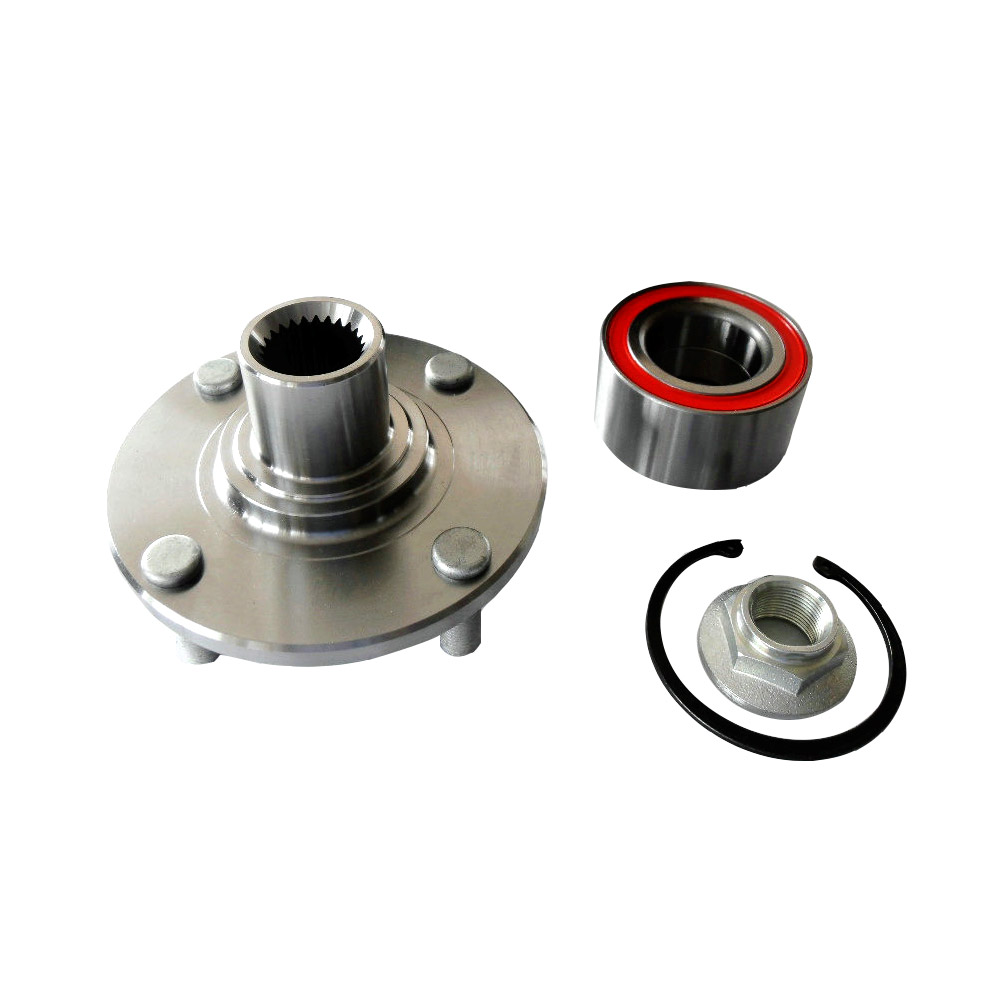The wheel hub bearing is one of the indispensable core components in the automobile chassis system. It connects the wheel and the suspension system, and bears the important functions of supporting the weight of the vehicle, transmitting driving force and braking force. As an important guarantee for vehicle driving stability and safety, the quality of the wheel hub bearing directly affects the driving experience and driving safety.
The wheel hub bearing is a rolling bearing installed at the center of the wheel. Its main function is to reduce the friction when the wheel rotates, while bearing the radial load and axial load from the vehicle. Modern cars usually use an integrated hub bearing unit (Hub Bearing Unit). This design integrates the bearing, flange and seal together, which simplifies the installation process and improves reliability.
The wheel hub bearing not only needs to bear the static weight of the vehicle, but also has to deal with complex working conditions such as impact force, lateral force and temperature changes during dynamic driving, so its performance requirements are extremely high.
The wheel hub bearing needs to bear the entire weight of the vehicle and various forces generated during driving, including vertical load, lateral load and longitudinal load. In order to meet these requirements, the wheel hub bearing is usually made of high-strength steel and is precision-processed to ensure durability.
The wheel hub bearing is equipped with balls or rollers inside, which reduce friction through rolling contact, thereby improving the rotation efficiency of the wheel. This not only helps to reduce fuel consumption, but also prolongs the service life of the bearing.

Modern wheel hub bearings are usually equipped with double-layer sealing rings, which can effectively prevent dust, sand and water from entering the bearing, avoid grease loss or corrosion problems, and ensure the long-term stable operation of the bearing.
As the automotive industry continues to increase its requirements for energy conservation and emission reduction, the design of wheel hub bearings also tends to be lightweight. By optimizing materials and structures, the weight is reduced while maintaining sufficient strength and rigidity.
The core function of the wheel hub bearing is to achieve free rotation of the wheel while transmitting the weight and torque of the vehicle to the suspension system. When the vehicle is driving, the power of the engine is transmitted to the wheel through the drive shaft, and the wheel hub bearing is responsible for smoothly converting this power into the rotation of the wheel. In addition, during braking, the wheel hub bearing also needs to withstand the braking force applied by the brake caliper.
In order to meet the needs of different models, wheel hub bearings are divided into single-row, double-row and multi-row designs. Among them, double-row angular contact ball bearings are widely used in passenger cars and commercial vehicles due to their excellent load-bearing capacity and impact resistance.
Although wheel hub bearings are well designed, they may still fail in actual use. Here are some common problems and their causes:
If you hear a "buzzing" or "clicking" sound near the wheel during driving, it is likely caused by wear or damage to the wheel hub bearing. This situation is usually caused by long-term overload, poor lubrication or external impact.
Bearing overheating may be caused by insufficient lubrication, seal failure or improper installation. High temperature will accelerate the wear of the internal parts of the bearing and even cause complete failure.
Looseness or excessive clearance
After long-term use, the bearing may become loose due to fatigue or aging, which will affect the handling and stability of the vehicle.
Damage to the seal ring will cause mud and water to invade the inside of the bearing, causing grease contamination and bearing corrosion, and ultimately shortening the service life.
In order to extend the service life of the wheel hub bearing and ensure driving safety, the following maintenance suggestions are crucial:
In daily maintenance, the wheel hub bearing should be checked regularly for abnormal noise, vibration or looseness. If problems are found, they should be replaced in time.
For non-maintenance-free wheel hub bearings, high-quality grease should be added regularly to reduce friction and protect internal parts.
When installing wheel hub bearings, the bolts must be tightened strictly according to the torque value specified by the manufacturer to avoid early damage caused by improper installation.
Overloading will significantly increase the burden on the wheel hub bearings and accelerate their wear. Therefore, long-term heavy-load driving should be avoided as much as possible.
When replacing wheel hub bearings, products from well-known brands should be selected to ensure that their quality and performance meet the standards.
With the rapid development of the automotive industry, wheel hub bearings are also evolving. Here are several major trends:
The new generation of wheel hub bearings may integrate sensor technology to monitor the temperature, vibration and load status of the bearings in real time, provide early warning information to the driver, and further improve driving safety.
In response to the call for sustainable development, wheel hub bearings may use more environmentally friendly materials in the future, such as recyclable alloys or composite materials, to reduce the impact on the environment.
With the popularization of electric vehicles, wheel hub bearings will be further optimized in design to reduce weight while improving load-bearing capacity and durability.
Although the wheel hub bearing is only a small component, it plays a vital role in the driving process of the car. From supporting the weight of the vehicle to ensuring driving stability, the importance of wheel hub bearings cannot be ignored. By understanding their structure, working principle and maintenance methods, we can better protect this key component, thereby extending the life of the vehicle and ensuring driving safety. In the future, with the advancement of technology, wheel hub bearings will continue to develop in a smarter and more environmentally friendly direction, injecting new vitality into the automotive industry.






